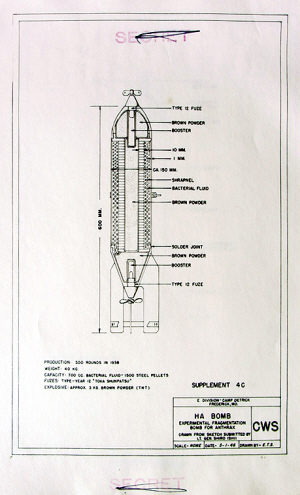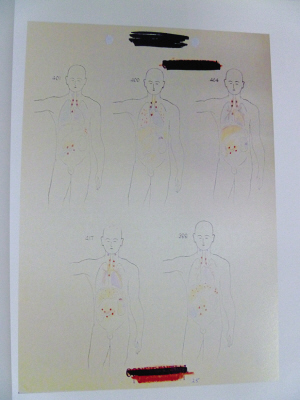New evidence of Japan's Unit 731 bio-warfare
- By Chen Boyuan
 0 Comment(s)
0 Comment(s) Print
Print E-mail China.org.cn, September 17, 2013
E-mail China.org.cn, September 17, 2013
|
|
Newly surfaced evidence from declassified U.S. archives details the atrocities committed by the Unit-731 of the Japanese invasion army in conducting biological warfare in China.
Recent research has shown more evidence that points to the Japanese army's covert biological and chemical warfare conducted across China's northeastern provinces during its occupation in WWII, Life Daily reported
Translations of the declassified U.S. archives show how Unit-731 developed some 1,700 biological bombs of more than 10 kinds, according to Yang Yanjun, chief of the Harbin-based International Research Center for Unit-731 Issues.
The Arvo Thompson Report revealed several detailed archives -- including design blueprints and experiment data -- of the Japanese attempts to conduct biological and chemical warfare in China.
|
|
Arvo Thompson, a U.S. Army colonel stationed in Japan after WWII, filed his conclusive report after interrogating Unit-731's first commander Shiro Ishii and his successor Masaji Kitano. The report featured details of the troop's research process, its experiments and its production of various bacterial bomb types.
Gong Wenjing, another researcher with the center, said the biological bombs found in the Unit-731 arsenal included Ishii-Type ceramic bacterial bombs, HA-Type bombs, I-Type bombs and cluster bombs.
"The Ishii-Type ceramic bacterial bomb was a modified one, based on the older UJI series bacterial bombs. It was named after Ishii as he had personally participated in the development. It contained fleas infected with Yersinia pestis," said Yang Yanjun, adding this was the type of biological bomb Unit-731 had mainly produced.
In experimenting, Unit-731 learnt that deploying Yersinia pestis-infected fleas was a more effective measure than directly spreading Yersinia pestis, the report showed.
"The U.S. Army's archive showed Unit-731 produced around 500 Ishii-Type ceramic bacterial bombs between 1937 and 1942, a record that coincides with Chinese documents," said Yang Yanjun, noting how a large number of ceramic bombs shells were once found at the Unit-731 site, proof of the troop conducting biological warfare.
Shiro Ishii confessed to the U.S. Army intelligence, regarding Unit-731 activities, in an attempt to escape war tribunal. His confession contained Unit-731's organizational structure, along with details of Japanese army-sponsored human experiments, biological warfare and biological weapons.
The U.S. declassified the intelligence as it had been 60 years since it was stored, proving from yet another perspective the WWII atrocities committed by Japanese troops in China, and refuting Japan's denial of invading China.








Go to Forum >>0 Comment(s)